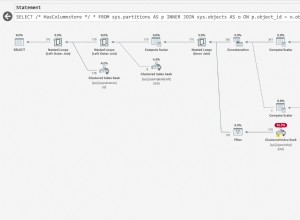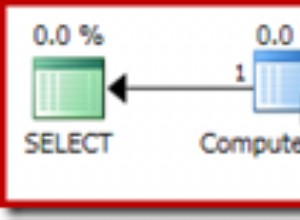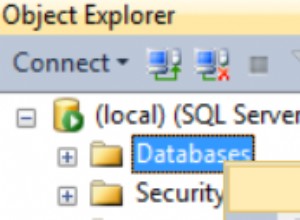En última instancia, he resuelto mi propio problema, por supuesto, con la ayuda consciente y subconsciente de las muchas publicaciones, blogs y registros de correo que he leído. Daría enlaces si pudiera recordar.
En pocas palabras, reinstalé TODO usando MacPorts.
Después de editar ~/.bash_profile y comentar todas las modificaciones anteriores a ${PATH}, descargué el dmg para Snow Leopard y corrió a través de su instalación.
Luego abrió la terminal y ejecutó la actualización automática.
sudo port selfupdate
sudo port install python26
Esa segunda parte, instalar Python 2.6, tomó una eternidad. Pero cuando se completó, me indicó lo siguiente:
To fully complete your installation and make python 2.6 the default, please run
sudo port install python_select
sudo python_select python26
Hice ambas cosas y se fueron rápido.
Olvidé mencionar lo útil que es el comando 'buscar puerto'. Busqué 'mysql' y similar para encontrar lo que debía escribir después de 'instalar'. Pero procedí a reinstalar tanto el cliente como el servidor para MySQL. Tal vez hice esto en orden inverso, pero el resultado final funcionó bien.
sudo port install mysql5
...
---> Installing mysql5 @5.1.41_0
The MySQL client has been installed.
If you also want a MySQL server, install the mysql5-server port.
Así que naturalmente:
sudo port install mysql5-server
Me encanta cómo muchas de las instalaciones de macports te dan retroalimentación sobre qué hacer a continuación. Al final de la instalación del servidor, decía lo siguiente:
******************************************************
* In order to setup the database, you might want to run
* sudo -u _mysql mysql_install_db5
* if this is a new install
******************************************************
Fue una nueva instalación para mí (no tenía ningún esquema local). Para completar, y para mi propia referencia, aquí está el resultado de ejecutar ese comando:
Installing MySQL system tables...
OK
Filling help tables...
OK
To start mysqld at boot time you have to copy
support-files/mysql.server to the right place for your system
PLEASE REMEMBER TO SET A PASSWORD FOR THE MySQL root USER !
To do so, start the server, then issue the following commands:
/opt/local/lib/mysql5/bin/mysqladmin -u root password 'new-password'
/opt/local/lib/mysql5/bin/mysqladmin -u root -h iMac.local password 'new-password'
Alternatively you can run:
/opt/local/lib/mysql5/bin/mysql_secure_installation
which will also give you the option of removing the test
databases and anonymous user created by default. This is
strongly recommended for production servers.
See the manual for more instructions.
You can start the MySQL daemon with:
cd /opt/local ; /opt/local/lib/mysql5/bin/mysqld_safe &
You can test the MySQL daemon with mysql-test-run.pl
cd /opt/local/mysql-test ; perl mysql-test-run.pl
Please report any problems with the /opt/local/lib/mysql5/bin/mysqlbug script!
The latest information about MySQL is available at http://www.mysql.com/
Support MySQL by buying support/licenses from http://shop.mysql.com/
Casi termino. Anteriormente en mi 'búsqueda de puertos' me encontré con este interesante puerto:
py26-mysql @ 1.2.2 (python, devel, bases de datos) Interfaz de Python a mysql
Con mucha, mucha esperanza de que esto me proporcionaría el paquete MySQLdb, lo instalé (y lo hizo).
sudo port install py26-mysql
Posteriormente, encendí el intérprete de python e intenté importar MySQLdb, lo que se interpuso en mi camino todo este tiempo.
iMac:~ drhoden$ python
Python 2.6.4 (r264:75706, Dec 15 2009, 18:00:14)
[GCC 4.2.1 (Apple Inc. build 5646) (dot 1)] on darwin
Type "help", "copyright", "credits" or "license" for more information.
>>> import MySQLdb
/opt/local/Library/Frameworks/Python.framework/Versions/2.6/lib/python2.6/site-packages/MySQLdb/__init__.py:34: DeprecationWarning: the sets module is deprecated from sets import ImmutableSet
>>>
¡¡Una advertencia, pero funcionó!!
Solo una cosa más:
sudo port install py26-django
¡Después de todo esto, finalmente pude poner en marcha mi proyecto Django y conectarme de forma remota al servidor MySQL de mi empresa! Puede que no haya sido necesario reinstalar Django usando MacPorts, pero no iba a correr el riesgo de complicaciones.




